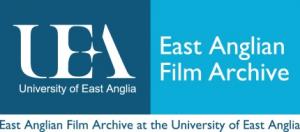The East Anglian Film Archive, the first and largest Regional Film Archive in England, was established in 1976. Since 1984, EAFA has been owned and operated by the University of East Anglia, Norwich (UEA), to support research and work to preserve our moving image heritage. More than 250 hours are freely available online as examples of the wide range of film which attracts interest the world over.
This film is part of Free

Sea Harvest
Scenes of the herring harvest filmed at Great Yarmouth, Norfolk by amateur cameraman Mr Croxson who visited the wreck of a drifter recently lost with all her crew.
From the collection of:

Overview
Men unload the catch from drifters at the quay and the herring are gutted and packed in barrels by women workers. Their hands sting with the cold and the salt but there is a camaraderie in their work, and the women get a lift together at the end of their shift. Following the gale of 18 November 1936, a beached drifter Pitgavenney stands on the beach at Gorleston, and the Olive Branch lies wrecked at Kessingland, a sad reminder of the risks faced by the fishermen and their families.
The Peterhead drifter Olive Branch capsized near the Corton Lightship and was washed ashore at Kessingland, south of Lowestoft. All nine of her crew were lost, including six members of one family. The crew of Pitgavenney from Banff were rescued at Gorleston. October and November were the main fishing months off the east coast of England as the shoals of herring moved south from Scotland pursued by the Scottish drifters and fisher girls, joining those from the English ports. In 2016 a plaque was unveiled on the look-out building at the end of Gorleston Pier, seen at the start of this film, to celebrate the filming of fishing boats leaving Yarmouth Harbour at that spot in 1896, one of the earliest films recorded.
Related

New Perspectives: Nosferatu: A Symphony of Horror New Perspectives: Nosferatu: A Symphony of Horror
Short documentary 2025 3 mins
Harry Coghlan of Northumbria University explains why FW Murnau's 1922 vampire story is an endlessly intriguing work of art.

New Perspectives: La Haine New Perspectives: La Haine
Short documentary 2025 4 mins
Charlie Hammersley, a student from Northumbria University, explains how Mathieu Kassovitz's 1995 film holds up a mirror to society.

Dreamers Q&A Dreamers Q&A
Inside Film 2025 30 mins
The film-makers behind a haunting tale of love and community within a UK immigration detention centre visited the BFI Southbank to discuss their film.

Paul Thomas Anderson and Leonardo DiCaprio in Conversation Paul Thomas Anderson and Leonardo DiCaprio in Conversation
Inside Film 2025 50 mins
Paul Thomas Anderson and Leonardo DiCaprio in Conversation at BFI Southbank, discussing the making of One Battle After Another.

Laura Mulvey in Conversation Laura Mulvey in Conversation
Inside Film 2025 76 mins
Laura Mulvey in conversation, following her BFI Fellowship Award.

George Clooney in Conversation George Clooney in Conversation
Inside Film 2025 74 mins
George Clooney visited BFI Southbank to look back on his life and career.